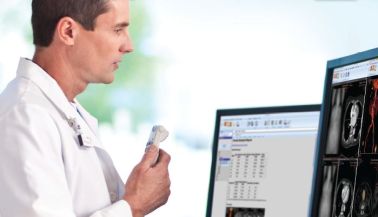When we say “multi-media reporting,” we are talking about the inclusion of information beyond words and numbers—images and even videos that can better tell the full story of a patient’s medical imaging history. As stated before, reporting and data is now a necessity in the radiology world, and this data is needed not only by the radiologist, but also referring physicians and patients too.
When we say “multi-media reporting,” we are talking about the inclusion of information beyond words and numbers—images and even videos that can better tell the full story of a patient’s medical imaging history. As stated before, reporting and data is now a necessity in the radiology world, and this data is needed not only by the radiologist, but also referring physicians and patients too.
The radiology report is the working tool for the referring physician. That is why this vital tool is critical for imaging and for overall patient care. A more robust reporting platform can lead to two important factors:
- More information for physicians to make better decisions
- Easier to understand information so patients can be more involved in their own healthcare
These ideas are not exactly anything new, but they have yet to be put into widespread practice throughout the medical imaging industry. The ultimate goal is to reduce errors and improve productivity of the radiologist. This can be accomplished by automatically including the measurements and data from various modalities. One example of this would be with a lesion management application. The radiologist uses the app to measure a lesion, and instead of just including the measurements in the 
Context will also play a key role in reporting. With so much information present, radiologists and physicians may need to see additional information than what is presented. A feature such as contextually aware bookmarks—such as clicking on a graph and seeing the data, images, and annotations behind the graph—allows for easier, more efficient navigation throughout the report. In the end, multi-media content has the ability to aid clinicians in treatment planning because it enhances the data present in the report.